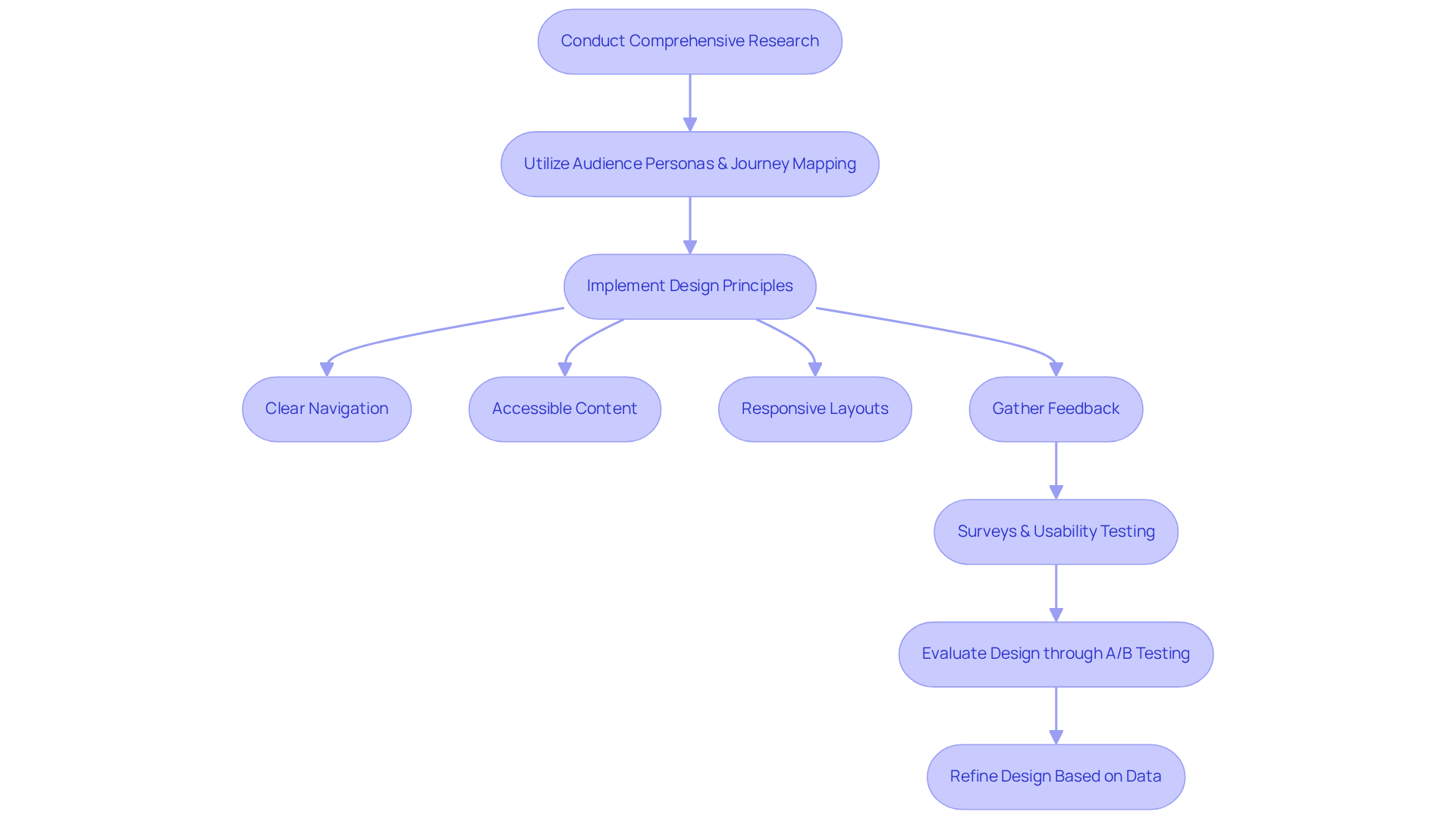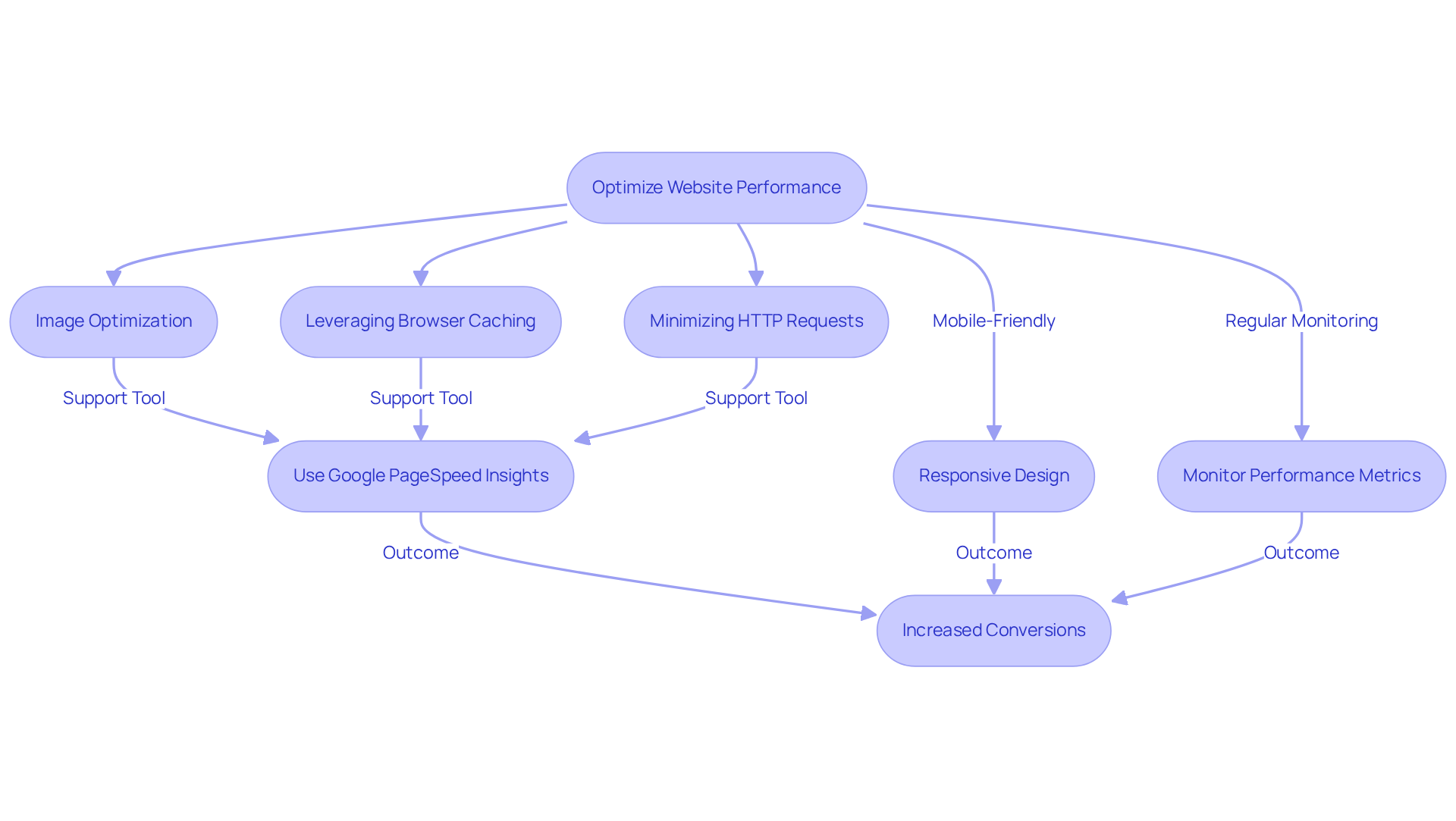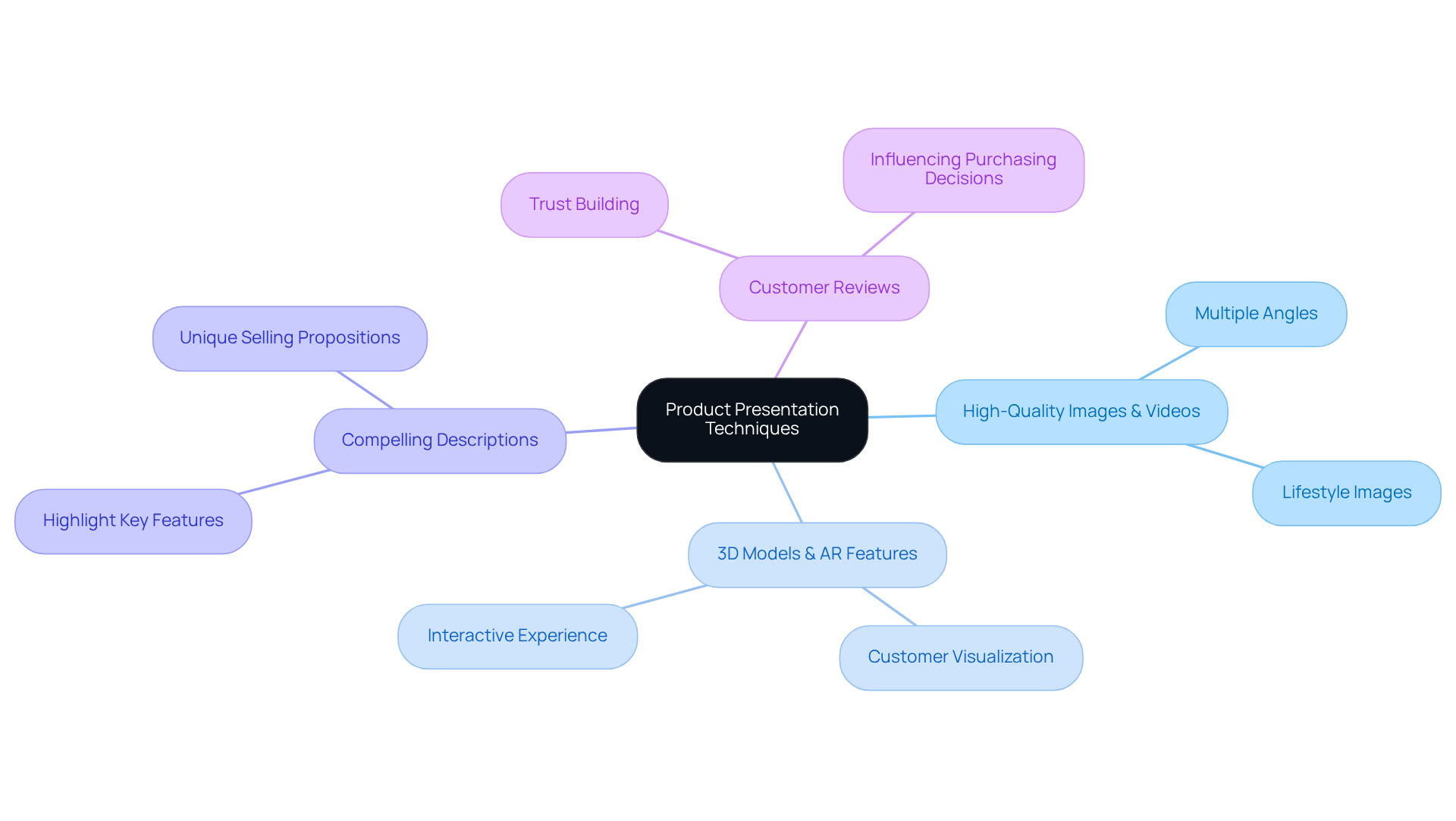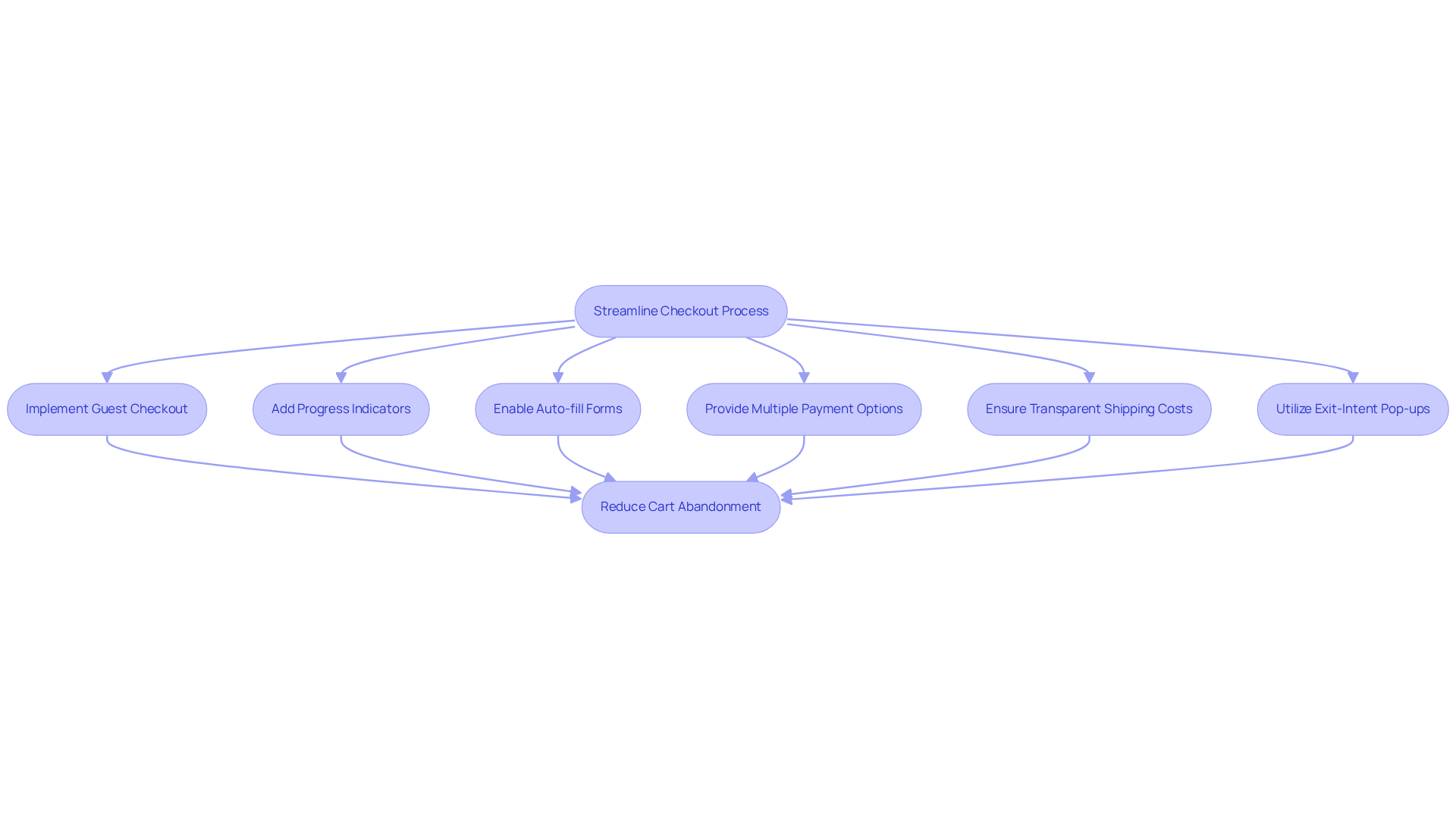
Overview
Effective e-commerce website design hinges on four essential practices:
- Establishing a user-centric design framework
- Optimizing website performance
- Implementing compelling product presentation techniques
- Streamlining the checkout experience
To illustrate these principles, specific strategies and examples are provided. For instance, employing audience personas can significantly enhance design relevance, while reducing load times is crucial for boosting user engagement. Furthermore, simplifying the checkout process is vital for lowering cart abandonment rates. These practices collectively demonstrate a clear path to improved customer interaction and increased conversions.
Introduction
Crafting an effective e-commerce website design is paramount in a digital landscape where consumer expectations are in constant flux. This article explores four essential practices that significantly enhance user experience while driving engagement and conversions. In a market flooded with design strategies, the pressing question remains: how can businesses discern which practices truly resonate with their audience and yield measurable success?
Establish a User-Centric Design Framework
To develop a , it is essential to conduct comprehensive research to understand your target audience's behaviors, preferences, and challenges. Begin by utilizing tools such as audience personas and journey mapping to visualize the experience effectively. Implement design principles in e-commerce website design that prioritize usability, including:
- Clear navigation
- Accessible content
- Responsive layouts
Consistently gather feedback from participants through surveys and usability testing to refine the design continuously. For instance, a direct-to-consumer (DTC) brand that redesigned its website based on customer feedback experienced a remarkable 25% rise in engagement and a 15% improvement in conversion rates within just three months.
Furthermore, consider employing A/B testing to evaluate various design elements and their impact on audience behavior. This data-driven strategy allows for informed decisions that enhance the overall client interaction, ultimately leading to higher conversion rates and increased customer loyalty.

Optimize Performance for Enhanced User Engagement
To optimize website performance, it is imperative to focus on reducing load times through the implementation of best practices such as:
- Image optimization
- Leveraging browser caching
- Minimizing HTTP requests
Tools like Google PageSpeed Insights serve as invaluable resources for identifying specific areas in need of improvement. For instance, a compelling case study demonstrated that an e-commerce website design, which successfully reduced its load time from 4 seconds to 2 seconds, experienced a remarkable 40% increase in conversions.
Furthermore, ensuring that your website is mobile-friendly is crucial, given that a significant portion of e-commerce traffic originates from mobile devices. Employ responsive design techniques to provide a consistent user experience across all devices. It is essential to regularly monitor performance metrics and user behavior analytics, as these insights will help identify trends and facilitate that enhance user engagement.

Implement Compelling Product Presentation Techniques
To engage your audience effectively, invest in that showcase your products from multiple angles. Consider incorporating 3D models or augmented reality features, allowing customers to visualize items within their own environments. Additionally, craft compelling item descriptions that highlight key features, benefits, and unique selling propositions. For example, a fashion retailer that enhanced its product pages with lifestyle images and detailed descriptions saw a 30% increase in average order value (AOV).
- Prominently display customer reviews and ratings on product pages to foster trust and credibility.
- The integration of social proof significantly influences purchasing decisions, as consumers often rely on the experiences of others when making choices.

Streamline the Checkout Experience to Reduce Abandonment
To , it is essential to reduce the number of steps required to complete a purchase. Implement features such as:
- Guest checkout options
- Progress indicators
- Auto-fill forms
to simplify the process. A study found that e-commerce sites that reduced their checkout steps from five to three experienced a 20% decrease in cart abandonment rates, underscoring the importance of efficiency.
Furthermore, providing multiple payment options caters to diverse customer preferences, while ensuring that shipping costs are transparent from the outset helps to avoid sticker shock. Consider utilizing exit-intent pop-ups to offer discounts or incentives to customers who are on the verge of abandoning their carts. Regular analysis of checkout metrics is crucial for identifying drop-off points, allowing for continuous optimization of the process based on user feedback and behavior.

Conclusion
Establishing an effective e-commerce website design is fundamentally rooted in a user-centric approach that prioritizes the needs and preferences of the target audience. By implementing a design framework that incorporates comprehensive research, performance optimization, compelling product presentation, and a streamlined checkout experience, businesses can significantly enhance user engagement and conversion rates.
Key practices have been highlighted throughout this article, such as:
- Utilizing audience personas for better understanding
- Optimizing website performance to reduce load times
- Showcasing products through high-quality visuals
- Simplifying the checkout process to minimize cart abandonment
Each of these strategies not only contributes to a more enjoyable user experience but also drives tangible business results, as evidenced by various case studies demonstrating increased engagement and sales.
The significance of these practices cannot be overstated. As e-commerce continues to evolve, adopting these essential strategies will be critical for staying competitive. Businesses are encouraged to embrace these insights and continuously refine their approach, ensuring that they meet the ever-changing demands of consumers in the digital marketplace. By doing so, they can foster customer loyalty and drive sustained growth in an increasingly crowded online landscape.
Frequently Asked Questions
What is the first step in establishing a user-centric design framework?
The first step is to conduct comprehensive research to understand your target audience's behaviors, preferences, and challenges.
What tools can be used to visualize the user experience?
Tools such as audience personas and journey mapping can be used to visualize the user experience effectively.
What design principles should be prioritized in e-commerce website design?
Design principles that should be prioritized include clear navigation, accessible content, and responsive layouts.
How can feedback be gathered to improve the design?
Feedback can be gathered from participants through surveys and usability testing to refine the design continuously.
What was the impact of redesigning a website based on customer feedback for a direct-to-consumer brand?
The brand experienced a 25% rise in engagement and a 15% improvement in conversion rates within just three months after the redesign.
What is A/B testing and how is it used in design?
A/B testing is a method used to evaluate various design elements and their impact on audience behavior, allowing for data-driven decisions that enhance client interaction.
What are the benefits of employing a data-driven strategy in design?
A data-driven strategy can lead to higher conversion rates and increased customer loyalty by making informed decisions based on audience behavior.
FAQs











